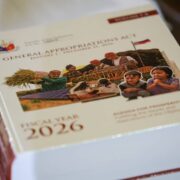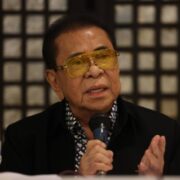Neda: Tariff war puts 8% ʼ25 GDP growth in peril

The upper-end of the Marcos administration’s 6 to 8 percent target range for economic expansion this year might not be realistic anymore due to uncertainties, the state’s top socioeconomic planner said amid heightened trade protectionism that’s stoking global recession fears.
Speaking to reporters on Monday, Secretary Arsenio Balisacan of the National Economic and Development Authority (Neda) said policymakers would still have to wait for the growth numbers for the first and second quarters before making any decisions to revise the targets.
But while the government’s best growth estimate of 8 percent for 2025 until 2028 looks more difficult to achieve by the day, Balisacan said the Marcos administration was still “confident” about hitting the low-end of the target band of 6 percent.
Overall, the Neda boss said the typical boost from the midterm elections might not be enough to offset the drag from significant uncertainties.
“You may be right that the 8-percent may not be a realistic assumption,” Balisacan said, adding that the uncertainties clouding the growth outlook would unlikely disappear soon.
“When we have more information about the first quarter, not just GDP (gross domestic product) but all other numbers, we have a sound basis for decision,” he added.
Recall that US President Donald Trump on April 2 unveiled a milder 17-percent tariff on Filipino goods, among the lowest in Asia. This was still lower than the 34 percent that the Philippines charges on inbound shipments from the US, including the estimated cost of non-trade barriers.
In the wake of Trump’s “Liberation Day” announcement that fanned global recession fears, institutions like the Asian Development Bank (ADB) cut its 2025 GDP forecast for the Philippines to 6 percent from 6.2 percent previously, tracking a broad downgrade in the Asia Pacific region.
But in a dramatic U-turn, Trump later announced a 90-day pause on his sweeping tariffs. But the 10 percent universal duty on all trading partners of the US remained in effect.
That said, Balisacan estimated that the 10-percent baseline tariff imposed by the US could boost total Philippine export growth by “1.5 percent”. But this estimate assumes that the relatively lower US tariffs on Filipino goods would increase the Philippines’ appeal and competitiveness in the international market.
That, in turn, could translate to a minimal increase of “less than 0.5 percentage point” to the GDP since exports only corner a small share of the consumption-driven economy’s total output.
In Southeast Asia, Oxford Economics said that the Philippines and Malaysia might be able to capture some of the diverted trade flows looking to avoid ports with higher tariffs.
“Philippines will probably not gain much from re-routing given its less developed trade logistics sector. Meanwhile, Malaysia could benefit given the government’s continuous commitment to trade infrastructure projects,” Oxford Economics said in a commentary.
“The relatively larger size of domestic spending in the Philippines buffers its economy against external volatility from an almost 20 percent export exposure to the US,” it added.




















